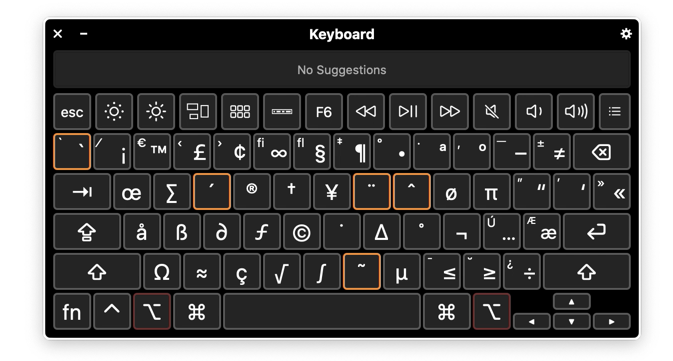
HOW TO USE ALT KEY ON MAC MAC
However, T hey can make some shortcuts seem complicated on a Mac because you have to use more keys. The substitutions let you perform the same actions you can do in Windows. The solution is to use specific substitutions, as shown in the table below. This is a problem, because many of these keys are used in Excel shortcuts. Unless you're using an extended keyboard, keys like Home, End, backspace, Page up, and Page down are nowhere to be found. Missing keysĪnother difference that may trip you up on a Mac is certain keys are missing. Personally, I like using the function keys to control the computer, so I leave this setting alone, and just the fn key when needed in Excel. In essence, this setting reverses behavior so that you need to use fn to control the Mac. If you do this, however, note that you won't be able to use function keys for things like Brightness, Volume, etc. Here you can check a box that will that will change function key behavior to work like "standard function keys". If you really hate using the fn key, you can change this behavior by changing a preference at System Preferences > Keyboard. You'll find the fn key in the lower left on your keyboard. To make function keys work like you expect in Excel, you need to add a key: the function or fn key. Why?īy default, Function keys on a Mac control the computer itself, things like screen brightness, volume, video pause and play, and so on. This means that if press only the function keys in Excel, you'll end up controlling the Mac, and not Excel. For example, you can use F1 for help, F7 for spelling, and shift + F3 to insert a function. But if you try these shortcuts directly on a Mac, they don't work. Standard Mac keyboard with 12 function keysĪs you know, function keys are uses for many shortcuts in Excel. These keys sit at the top of the keyboard and are labeled F1 to F12 on standard keyboards and F13, F14 and higher on extended keyboards.
HOW TO USE ALT KEY ON MAC WINDOWS
Like their counterparts in the Windows world, Mac keyboards have function keys. The table below shows some example shortcuts with a translation. You'll see these symbols in menus across all applications, so they're not specific to Excel. There really aren't too many symbols, so I recommend that you bite the bullet and memorize them. The Mac Finder – abbreviations appear in all applications, not just Excel For example, the Command key is abbreviated as ⌘, the Control key with ⌃, and the option key as ⌥. These symbols have a long history on the Mac, and you'll find them in menus everywhere. One of more confusing aspects of keyboard shortcuts on the Mac are the symbols you'll see for certain keys. On the Mac, navigating menus with the keyboard has been possible for many years, but very few Mac users are aware it exists.Also see: Excel shortcuts on the Mac // 3 minute video 1. On PCs it has been possible before Windows existed, because I think what Windows does was based on how you used the keyboard to navigate the menus of old MS-DOS applications. In both, it exists at the operating system level and works in any program in that system, not just Photoshop. The ability to use menus with the keyboard is not a Photoshop feature in either Windows or macOS.
HOW TO USE ALT KEY ON MAC MAC OS
How come the Mac OS version doesn't (/didn't) have that? Was it implemented within the past year or so? In macOS, you just start typing the command name from the first letter until it highlights. In Windows, the Alt shortcut is not always the same as the first letter of the command, so you might have to read the menu to see what the actual Alt shortcut is. Whether the Mac way is worse or better than the Windows way might be debatable. If you want to stop keyboard menu navigation, press Esc or click the mouse.

(I prefer using spacebar instead of Return) Press: menu bar shortcut, I, Return, T, Return. A lot of times the command highlights after you press the first letter, if no other commands on that menu start with the same letter.įor example, if you want to open the Trim command in Photoshop (which has no default shortcut), you would do this: Because you can type ahead, you don't have to wait until you type the entire command as soon as you type a unique name in the menu it highlights.

When the menu name is selected, press Return (or spacebar) to open it, then type the name of the command you want, then when it highlights, press Return to open the command. That's faster than pressing the right arrow key a few times to get past the other menus. For example, if the Apple menu is highlighted and you want to open the Window menu, type W. There are some important tips that the article doesn't mention.Īfter you press your shortcut that moves keyboard focus to the menu bar, you have more ways to open menus than just the arrow keys.


 0 kommentar(er)
0 kommentar(er)
